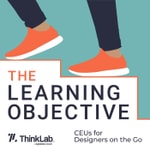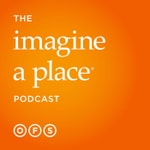The Learning Objective – Details, episodes & analysis
Podcast details
Technical and general information from the podcast's RSS feed.

The Learning Objective
ThinkLab and SURROUND
Frequency: 1 episode/58d. Total Eps: 20

Recent rankings
Latest chart positions across Apple Podcasts and Spotify rankings.
Apple Podcasts
🇨🇦 Canada - design
31/07/2025#73🇨🇦 Canada - design
30/07/2025#53🇨🇦 Canada - design
29/07/2025#25🇺🇸 USA - design
20/05/2025#99🇺🇸 USA - design
17/05/2025#99🇺🇸 USA - design
16/05/2025#63🇺🇸 USA - design
24/04/2025#90🇺🇸 USA - design
29/12/2024#85🇨🇦 Canada - design
13/12/2024#41🇨🇦 Canada - design
12/12/2024#30
Spotify
No recent rankings available
Shared links between episodes and podcasts
Links found in episode descriptions and other podcasts that share them.
See allRSS feed quality and score
Technical evaluation of the podcast's RSS feed quality and structure.
See allScore global : 68%
Publication history
Monthly episode publishing history over the past years.
Designing for Data
Episode 16
mardi 22 octobre 2024 • Duration 34:24
In this episode we explore how technology is transforming real estate strategy and design processes. Our guests, Brian McCourt from Cisco and Michael Gordon from Deloitte, discuss the critical role of tech in enhancing end user experience, indoor environmental quality, and informing strategic real estate decisions. Listeners will learn about the importance of early tech integration in the design process, and how leveraging data can lead to more informed, cost-effective outcomes.
Here's how to complete your entire CEU podcast process in 3 simple steps:
Step 1: Listen to the episode.
Step 2: Visit this link, to take a short 5 question quiz.
*Scoring an 80% or above on the quiz will earn you 0.5 CEU/0.5 LU.
Step 3: Upon passing the quiz, receive your certificate of completion from the CEU provider.
See Privacy Policy at https://art19.com/privacy and California Privacy Notice at https://art19.com/privacy#do-not-sell-my-info.
Understanding the End User Decision-Making Process
Episode 15
mardi 24 septembre 2024 • Duration 36:04
In this episode, we explore the future of customer decision-making in the built environment. Our guests, Amanda Schneider and Meredith Campbell, share insights from their Design Hackathon project which encompassed six months of intensive research. Engaging with end users across various sectors, their research worked to uncover the challenges and changes taking place in the end user decision-making processes. Listeners will learn about the key factors causing delays, the impact of increased focus on costs, and the strategies needed to navigate these complexities.
After listening, you will be able to:
- Understand how the doubling of internal decision-making committees over the last five years has increased complexity and risk aversion in the built environment sector.
- Identify the importance of value engineering (VE) as a proactive approach to manage cost uncertainty and why it should be an integral part of the project process.
- Recognize the need for storytelling with data, transforming raw data into actionable insights that help clients make informed decisions more effectively.
- Apply strategies to manage complex decision-making processes by aligning with clients' decision-making procedures and simplifying the presentation of data for better communication.
READ THE TRANSCRIPT
Here's how to complete your entire CEU podcast process in 3 simple steps:
Step 1: Listen to the episode.
Step 2: Visit this link to take a short, 5-question quiz.
*Scoring an 80% or above on the quiz will earn you 0.5 CEU credits.
Step 3: Upon passing the quiz, receive your certificate of completion from the CEU provider.
Special thanks to our CEU episode sponsors, Allsteel, Keilhauer, Kimball International, and Teknion, for partnering with us to provide valuable insights on compelling topics for the design industry.
See Privacy Policy at https://art19.com/privacy and California Privacy Notice at https://art19.com/privacy#do-not-sell-my-info.
Can Material Innovation Save Our World?
Episode 7
mardi 27 septembre 2022 • Duration 30:13
New Rules for Communication and Collaboration
Episode 6
mardi 30 août 2022 • Duration 35:23
Cultivating Creativity
Episode 5
mardi 26 juillet 2022 • Duration 37:29
Designing for Equity and Belonging
Episode 4
mardi 28 juin 2022 • Duration 43:39
The Art & Science of Experience
Episode 3
mardi 7 juin 2022 • Duration 35:42
The Possibilities of Acoustics
Episode 2
mardi 10 mai 2022 • Duration 33:04
Designing Against Burnout
Episode 1
mardi 5 avril 2022 • Duration 33:25
The Learning Objective Trailer
mardi 8 mars 2022 • Duration 01:34
